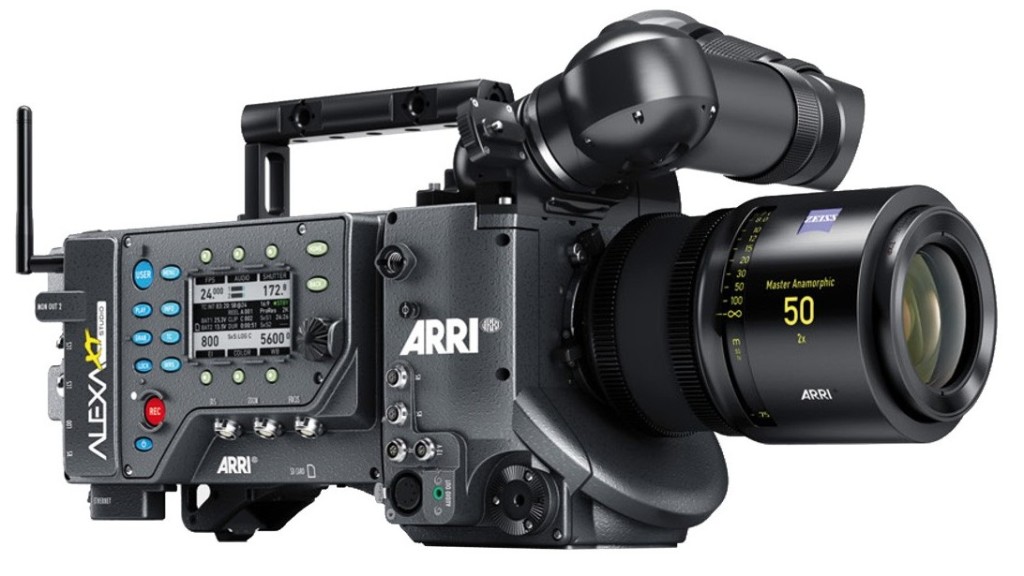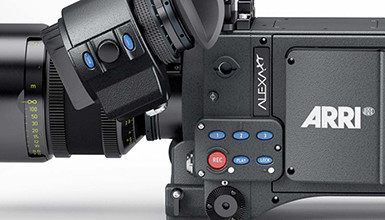
The new codec is 12 bit RGB, just like ProRes 4444, but at a lower compression ratio of 1:4.5 versus 1:6.8 found in ProRes 4444. That means bigger data, but better data too. ProRes 4444 HD at 29.97 fps is about 330 Mbit/s, while ProRes 4444 XQ HD at 29.97 fps is 495 Mbit/s. This can add up, as you may imagine, but it's a great option when you want the highest quality image.
The great news is that Arri has decided to include ProRes 4444 XQ as a recording option in the ALEXA XT & XR. It will come as a free update included in Software Update Packet (SUP) 10, which should be out in August. The original ALEXA will not support this codec, but ALEXA XT and cameras upgraded to XR have a powerful compression board installed that allows it. I'm sure all of you ALEXA owners out there have a lot of questions, so Arri has put together an FAQ to help clarify things. Read through to learn about the frame rates supported, media, and data rates.
What is the advantage of ProRes 4444 XQ?
ProRes 4444 XQ has a lower compression ratio (about 1:4.5) than ProRes 4444 (about 1:6.8). This means a higher data rate, which is great for doing extreme color grading in post. The fact that it is a 12 bit RGB codec (like ProRes 4444) also helps in preserving the superior tonal range of ALEXA's Log C signal.
Who will use ProRes 4444 XQ?
ProRes 4444 XQ is one more choice available, in addition to the other ProRes codecs, ARRIRAW and DNxHD. Customers can choose the recording format that best matches their post workflow, distribution format and budget. This flexibility has always been one of the great advantages of ALEXA cameras. While we expect ProRes 4444 to continue to be the most popular recording format for ALEXA shows, we think that a number of commercials and high end TV shows will want to use ProRes 4444 XQ.
When will ProRes 4444 XQ be available for ALEXA?
ProRes 4444 XQ is a feature of the free-of-charge Software Update Packet SUP 10.0, which is scheduled for an open beta in July and a final release in August. We are currently deep in the testing phase of SUP 10, and depending on how testing goes the releases will be earlier or later in those months.
Which ALEXA models will support ProRes 4444 XQ?
ProRes 4444 XQ will work on all ALEXA XT cameras and all ALEXA Classic cameras with the XR Module upgrade. The reason is that the XR/XT cameras have a much more powerful compression board than the ALEXA Classic cameras. The compression board of ALEXA Classic cameras cannot handle the higher data rate of ProRes 4444 XQ.
Will ProRes 4444 XQ work with ProRes HD, 2K, 16:9 and 4:3?
Yes, all currently supported ProRes resolutions (ProRes HD and ProRes 2K) and all supported aspect ratios (ProRes HD 16:9, ProRes 2K 16:9 and ProRes 2K 4:3) can take advantage of ProRes 4444 XQ.
What recording medium can I use to record ProRes 4444 XQ with?
You can use SxS PRO cards, CFast 2.0 cards and XR Capture Drives.
What is the maximum frame rate for ProRes 4444 XQ?
We are still in the fine tuning phase, but here are our preliminary findings: When recording ProRes 4444 XQ in HD/16:9 resolution onto an XR Capture Drive, you get a maximum of 75 fps. In ProRes 2K/16:9 resolution, that will be 60 fps. The maximum frame rates for CFast 2.0 and SxS PRO cards will be lower. We are working on an overview table that shows all recording formats/recording media combinations with the resulting maximum fps.
Which post software supports ProRes 4444 XQ?
Apple's Final Cut Pro X 10.1.2 supports ProRes 4444 XQ for editing, compositing, rendering, and exporting. FCPX 10.1.2 is available now. We are sure, however, that others will follow soon, and we will list all compatible tools on the 'Working with ProRes' web pages in the Workflow area of the ALEXA web pages.
What is the data rate for ProRes 4444 XQ?
See table below. For comparison: ProRes 4444 HD/16:9 at 29.97 fps is about 330 Mbit/s, while ProRes 4444 XQ HD/16:9 at 29.97 fps is 495 Mbit/s. Thus the ProRes 4444 XQ data rate is 1.5x higher than the data rate of ProRes 4444.

Does this mean that I need more storage capacity when I shoot ProRes 4444 XQ?
Yes. Since ProRes 4444 XQ has about 1.5x the data rate of ProRes 4444, you will need about 1.5x the storage capacity. In exchange you get a higher quality image.
Will AMIRA also support ProRes 4444 XQ?
That's possible in the future but at this stage ProRes 4444 XQ will only be available for ALEXA XT/XR cameras.
Make sure to visit Arri's site and check out Apple's latest white paper for more info on the new ProRes 4444 XQ codec. If you want to learn even more about the ALEXA, our next Arri ALEXA Intensive is coming up later this month in LA!












